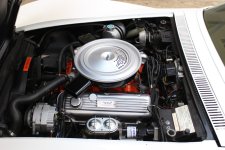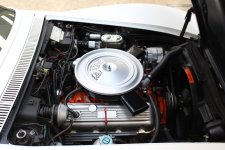MilkyNoSugar
CCCUK Member
I am not convinced the PCV valve and oil filler/breather are connected correctly on my big block engine. The car has non-standard valve covers with the filler cap and PCV valve on opposite sides where the originals would be as far as I can tell.
On the driver-side valve cover, the oil filler cap is a vented cap. I do not believe this is standard as it touches the air intake pipe and the air filter has to be removed to refill the oil. I think that should actually be a cap with a pipe attached and the pipe running to the air filter base plate where the PCV valve is currently connected.
I have a PCV valve on the passenger side valve cover. The pipe from that goes into the back of the air filter housing. I think the PCV pipe should be connected to the carb base plate or intake manifold - on the limits of my understanding but potentially an issue with the vacuum or pressure not being there to control the PCV if it is vented to fresh air effectively via the air filter. I believe the original PCV location would have been on the driver side, and would have connected to the pipe near the alternator where the two jubilee clips are.
Thoughts on that please from anyone who actually understands this?
On the driver-side valve cover, the oil filler cap is a vented cap. I do not believe this is standard as it touches the air intake pipe and the air filter has to be removed to refill the oil. I think that should actually be a cap with a pipe attached and the pipe running to the air filter base plate where the PCV valve is currently connected.
I have a PCV valve on the passenger side valve cover. The pipe from that goes into the back of the air filter housing. I think the PCV pipe should be connected to the carb base plate or intake manifold - on the limits of my understanding but potentially an issue with the vacuum or pressure not being there to control the PCV if it is vented to fresh air effectively via the air filter. I believe the original PCV location would have been on the driver side, and would have connected to the pipe near the alternator where the two jubilee clips are.
Thoughts on that please from anyone who actually understands this?


